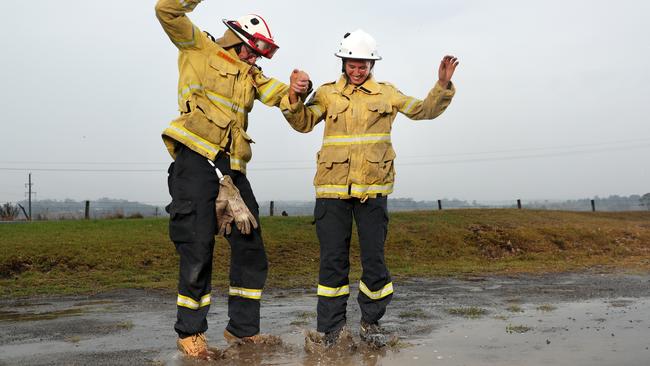Bushfires: Relief from the skies, but not for everyone
Heavy rainfall has helped firefighters in some areas, but very little fell on the fire grounds in East Gippsland and northeast Victoria.

Thunderstorms may have resulted in SES callouts for flash flooding, fallen trees and a sinkhole in suburban Melbourne but very little rain reached the fire grounds in East Gippsland and northeast Victoria, with a number of new grass fires being sparked by lightning.
In NSW, the situation was more hopeful, with more substantial rain bringing the number of fires burning across the state down to double digits, at 85, for the first time since early December.
“Relief is here,” NSW Rural Fire Service spokeswoman Angela Burford said.
“We’ve had decent rain in some areas. In parts of northern NSW, the rain was enough to put out the smaller fires that have been burning for months (and) that’s a major win for the RFS.”
Late on Thursday, 20 fires were still burning across Victoria, with approximately 1.5 million hectares burnt and four watch-and-act warnings in place.
Updated assessments of the damage from Victoria’s fires, which have been burning since November 21, show at least 387 residential buildings have been damaged or destroyed, along with 602 non-residential structures.
In NSW, the Blue Mountains town of Faulconbridge — which came under threat from an out-of-control bushfire just last Friday — received the state’s highest rainfall, with 45mm recorded.
On the mid-north coast, bushfires burning west of Port Macquarie in the Biriwal Bulga and Cottan-Bimbang national parks received 38mm of rain.
Survivors of the catastrophic south coast bushfires were “overjoyed and overwhelmed” after 20mm of desperately needed rain washed across Batemans Bay, Mogo and Malua Bay.
More than 10,400 houses and businesses were plunged into darkness on Thursday night after a lightning storm lashed the Hunter region and Newcastle.
The highest rainfall recorded near any major Victorian fire was 19mm at Gelantipy in East Gippsland, with most other fire areas receiving less than 5mm.
The highest rainfall in the state was 77mm at St Albans in Melbourne’s northwestern suburbs, most of which fell within an hour.
Bureau of Meteorology forecaster Diana Eadie said 44mm had fallen in half an hour at Avalon, northeast of Geelong, where record wind gusts of 113km/h were also recorded.
“We’ve also seen reports of hail in the Ballarat area,” she said.
Ms Eadie said much of Victoria could expect showers and storms with the potential for between 2mm and 5mm of rain in coming days and heavier localised falls, with hope that a low pressure system due to develop over the state may bring more substantial rain from Sunday into Monday.
“We’re expecting a low pressure system to develop, and with that there is the potential for some more widespread showers and potentially heavy falls associated with thunderstorms,” she said.
“However, it’s going to be highly dependent on exactly where that low pressure system forms, so we’ll be monitoring it very closely.”
Thunderstorms on Wednesday and Thursday resulted in 607 SES callouts in Victoria, including 273 for fallen trees, 176 for building damage and 113 for flooding, as well as calls related to a 4m sinkhole that opened up in Keilor East in Melbourne’s northwest.
The vast majority of the calls came from Melbourne’s northern and western suburbs.



To join the conversation, please log in. Don't have an account? Register
Join the conversation, you are commenting as Logout